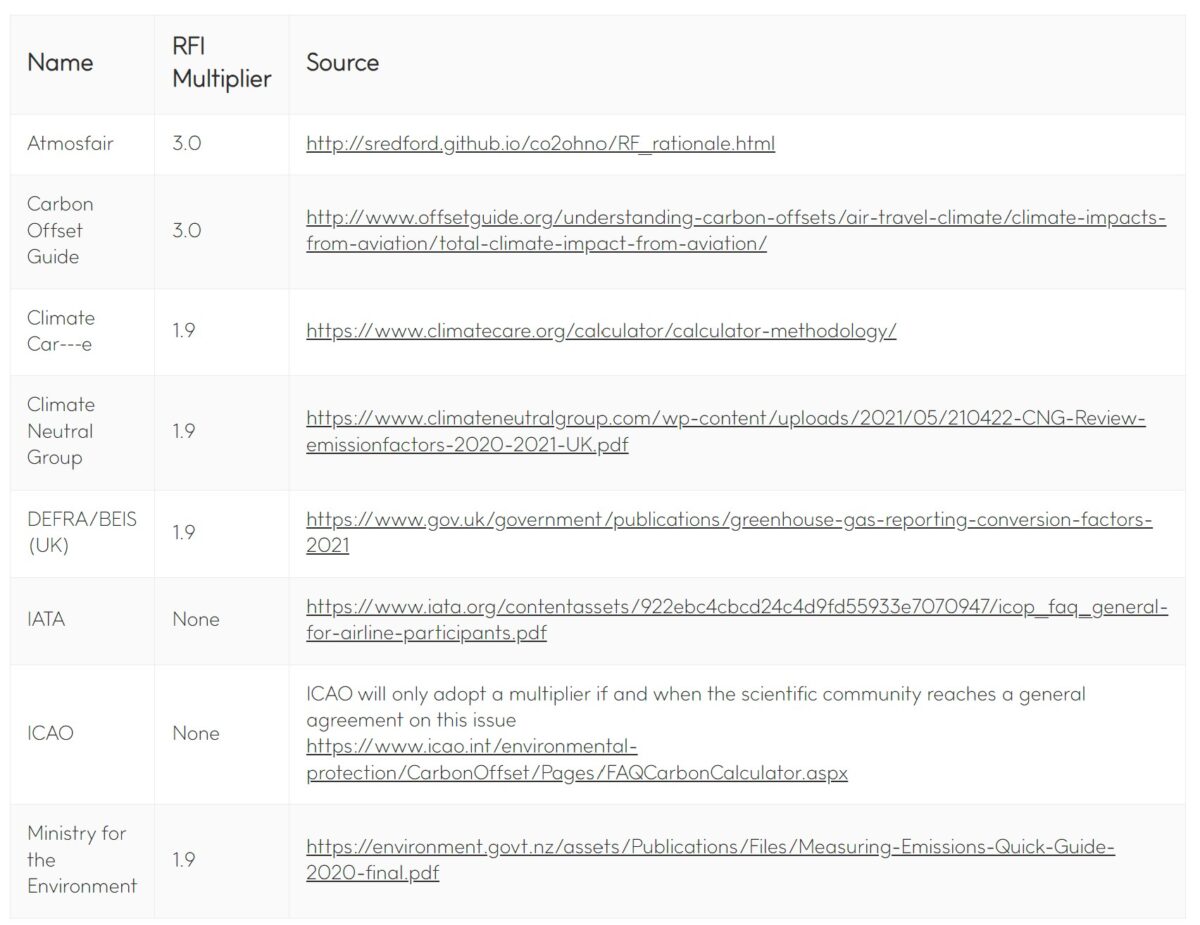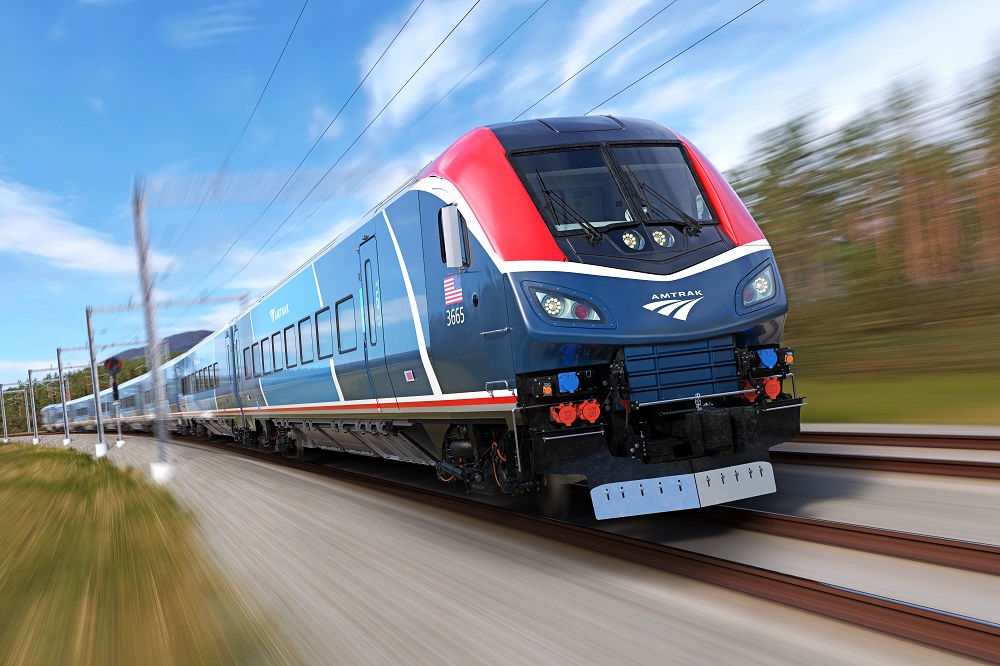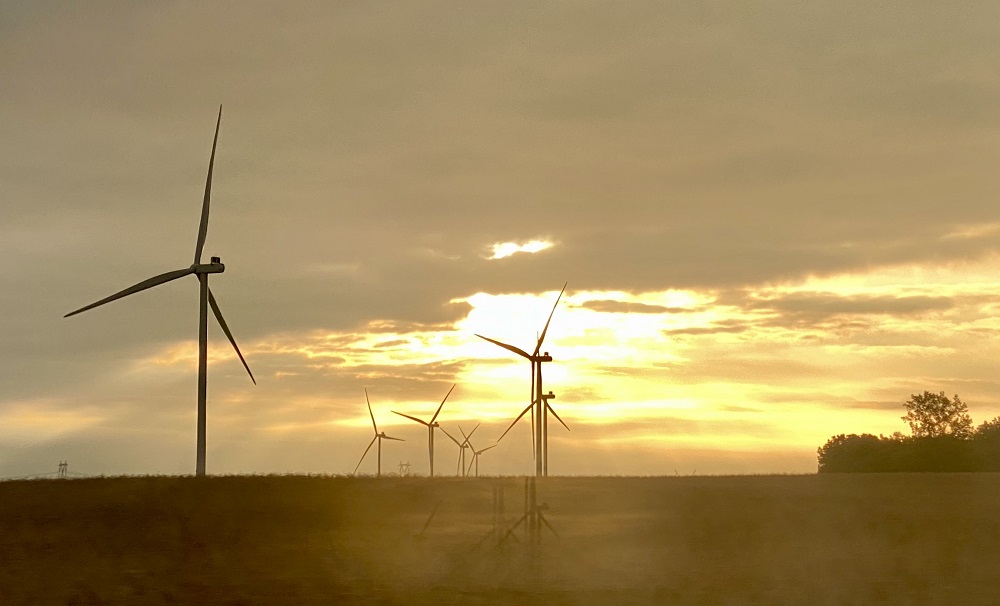Tens of thousands of solar power professionals are journeying across the United States and from around the globe to Las Vegas, Nevada for RE+. For many, both the trip and their overall careers are mission driven by a commitment to emissions reductions. This raises an obvious question: If they must attend the convention, which mode of travel would emit the smallest quantity of carbon?
Three attendees, Christian Roselund, Peter Kelley, and John Fitzgerald Weaver, decided to go by train starting from the East Coast. Along the way they put their heads together, developing their casual debate about ‘low-emission’ travel into a more precise, detailed explanation.
Planes, trains, or automobiles – which has the lowest emissions?
Finding an accurate answer was not easy, but the 60-hour Amtrak journey to the convention allowed for deep reflection and discussion on various energy infrastructures. As the train traversed the landscape, a vast array of energy infrastructure piqued our interests: wind turbines, coal-laden railcars, solar arrays, hydro dams, and electricity substations.

Image: John F. Weaver
As some readers may expect, calculating emissions is complex. While there are numerous CO2 calculators available, they can yield different results due to varying underlying assumptions. While CO2 emissions can be straightforward to compute, other factors, such as the effects of water vapor, NOx, and black carbon at high altitudes, complicate matters. This led our conversation to its primary challenge: which assumptions should be used?
When assessing the emissions from aviation, the selection of appropriate assumptions is crucial. Although determining a jet’s CO2 emissions is fairly standardized, emissions like water vapor, NOx, and black carbon at high altitudes play a significant role. These elements directly influence ‘radiative forcing,’ the balance between sunlight absorbed by the Earth and energy radiated back to space. Alterations in this balance, driven by these emissions, can impact the Earth’s climate and temperature.
Disclaimer: we are not climate scientists. The effects of non-CO2 emissions on radiative forcing are actively being researched and debated. For a comprehensive comparison of opinions on this matter, consider visiting resources like Toitū Envirocare, which provides insights into how various standards apply Radiative Forcing Index (RFI) multipliers.
It’s worth noting that the International Civil Aviation Organization (ICAO) emissions calculator, viewed by many experts we consulted as the industry standard for aviation’s CO2 emissions, doesn’t factor in non-CO2 radiative forcing.

Yet, both the IPCC and governments from countries like the UK and New Zealand account for non-CO2 radiative forcing in aviation emissions. They use a multiplier of 1.9, indicating aviation’s climate impact is nearly double what raw CO2 emissions suggest.
Emissions from Amtrak, though different, still pose a challenge. Ideally, calculating CO2 from a diesel train should be simple. However, Amtrack’s public data doesn’t distinguish between diesel and electric train emissions. After some digging, we found an EPA draft paper that calculated an emissions intensity of 0.28 lbs CO2 per passenger mile for Amtrack’s diesel trains in 2018. A clear and easily accessible disclosure from Amtrak on the emissions of its diesel fleet would provide a significant contribution to the public discourse on travel emissions.

Which carbon footprint is smallest?
Emissions intensity varies widely, and isn’t determined solely by the mode of transportation. A variety of factors come into play, such as the distance traveled and the source of the energy propelling the vehicle. For instance, when considering how far you’re traveling, is your train diesel or electric? The answer could significantly impact the emissions of your journey.
Short-haul flights typically have a higher emissions intensity per mile. This is largely because more energy is expended, and more carbon released, during takeoff than during cruising. Conversely, trains offer a different dynamic. In the U.S., electric trains are primarily found on the Boston to Washington D.C. route, and produce significantly fewer emissions than diesel trains.
Therefore, traveling by train along Amtrak’s “Northeast Corridor,” is a clear win for the environment, especially if it’s electric. In this region, even raw CO2 emissions from trains tend to be much lower than planes, particularly because the flights are short. According to the EPA analysis cited above, electric trains produce less than half the emissions of a diesel train.
Yet, our 2,961 mile experience painted a different picture. Our journey was a combination of long-distance train travel, served only by diesel engines, and car rides, which combined to create a carbon emissions scenario that surprisingly favored flying. A direct flight from Boston to Las Vegas would have been shorter by almost 600 miles compared to our multi-modal journey. Shockingly, this meant that our choice to avoid flight led to higher CO2 emissions – approximately 366 kilograms per person (kg/p).

Despite this revelation, it wasn’t a complete loss for our eco-conscious choice. Thanks to the absence of jet contrails and their associated water vapor emissions – a major component of non-CO2 radiative forcing – we estimate that our total climate impact was 37% less than if we had flown, even if our CO2 emissions were 28% higher.
We were skeptical of our initial findings, given their counterintuitive nature. To verify, we consulted multiple third-party resources, finally settling on what seemed to be the most detailed calculator, Sweden’s Travel and Climate Initiative. Their estimates closely mirrored ours, with train journeys demonstrating a lesser climate impact by about 15%. Notably, their metrics also incorporate non-CO2 radiative forcing, using a factor of 1.7, which is slightly below the standards adopted in the UK and New Zealand.

But that’s not the end of the story. To truly minimize environmental impact, we must consider other factors. Even the season or the time of a flight can make a substantial difference. Radiative impacts peak in the winter and at night, meaning a daytime flight in the summertime has lower than average flight emission effects. Lastly, always consider the load factor: is a flight running full, or with many empty seats? Every variable plays its role in this complex equation.
Considering the automobile?
Carpooling from Boston, whether in an internal combustion gas engine or an electric vehicle, emerged as the least emission-intensive travel option for this journey. Additionally, driving could be a faster alternative to Amtrak if the team rotated driving responsibilities and continued without extended breaks.

According to Google Maps, the most direct route spans 2,715 miles and requires 39 hours of driving time. If a Tesla Model 3 were the vehicle of choice, boasting an efficiency between 3.3 and 4.17 miles per kWh, then the journey would require 724 kWh, assuming an average of 3.75 kWh/mile.
Data from the U.S. Energy Information Administration in 2021 indicated that the power grid generated 0.88 pounds of CO2 per kWh generated, translating to 0.38 kg/kWh. When divided among three carpooling passengers, the result is approximately 93 kg/p of CO2 emissions.
Consequently, emissions for each traveler in the electric vehicle stand at just over 18% of the equivalent emissions from a direct flight and 25% of the emissions from the predominantly diesel-powered train journey.
Potential solutions
Decarbonizing aviation remains a distant goal, but there are tangible steps to reduce train emissions. A significant issue arises from Amtrak’s reliance on diesel locomotives for their long-distance lines outside the Northeast Corridor. The same research that provided the emissions intensity for diesel indicates that Amtrak’s electric trains emit less than half the amount on a per-passenger basis.
As a result, as Amtrak electrifies its lines, per-passenger emissions could decrease by half or even more. As the energy grid integrates more renewables and becomes cleaner, these per-passenger emissions will continue to decline.
Amtrak is already making strides in this direction by introducing the Amtrak Airo trains. These vehicles, capable of operating on both diesel and electricity, boast greater fuel-efficiency and produce 90% fewer particulate emissions in diesel mode.

However, Amtrak faces challenges beyond electrification. The duration of certain journeys, such as the 60 hours from Boston to Flagstaff, is absurd. For example; the Lakeshore Limited, which was the initial segment of the journey for John and Christian, averages a speed of 46 mph despite the fact that the train reached 86 mph on smoother sections of track.
A significant factor hindering speed and efficiency is the state of the tracks. Outside the Northeast Corridor, Amtrak utilizes tracks owned and maintained by freight companies, such as CSX & BNSF. These entities maintain tracks primarily for freight purposes, often neglecting the requirements for passenger travel.
The lack of maintenance has even spurred railroad workers’ unions to advocate for federal government intervention, suggesting the nationalization of these tracks. Such a move could lead to track upgrades or, alternatively, compel these companies to elevate their track standards for more efficient and smoother passenger travel. Without such improvements, advanced features of the new Airo, like its ability to reach speeds of up to 125 mph, might remain underutilized.
In the end, Amtrak’s challenges require external intervention. Both politicians and Amtrak’s management will need external encouragement to enhance the appeal of train travel as an alternative for flying.
The views and opinions expressed in this article are the author’s own, and do not necessarily reflect those held by pv magazine.
This content is protected by copyright and may not be reused. If you want to cooperate with us and would like to reuse some of our content, please contact: editors@pv-magazine.com.








By submitting this form you agree to pv magazine using your data for the purposes of publishing your comment.
Your personal data will only be disclosed or otherwise transmitted to third parties for the purposes of spam filtering or if this is necessary for technical maintenance of the website. Any other transfer to third parties will not take place unless this is justified on the basis of applicable data protection regulations or if pv magazine is legally obliged to do so.
You may revoke this consent at any time with effect for the future, in which case your personal data will be deleted immediately. Otherwise, your data will be deleted if pv magazine has processed your request or the purpose of data storage is fulfilled.
Further information on data privacy can be found in our Data Protection Policy.